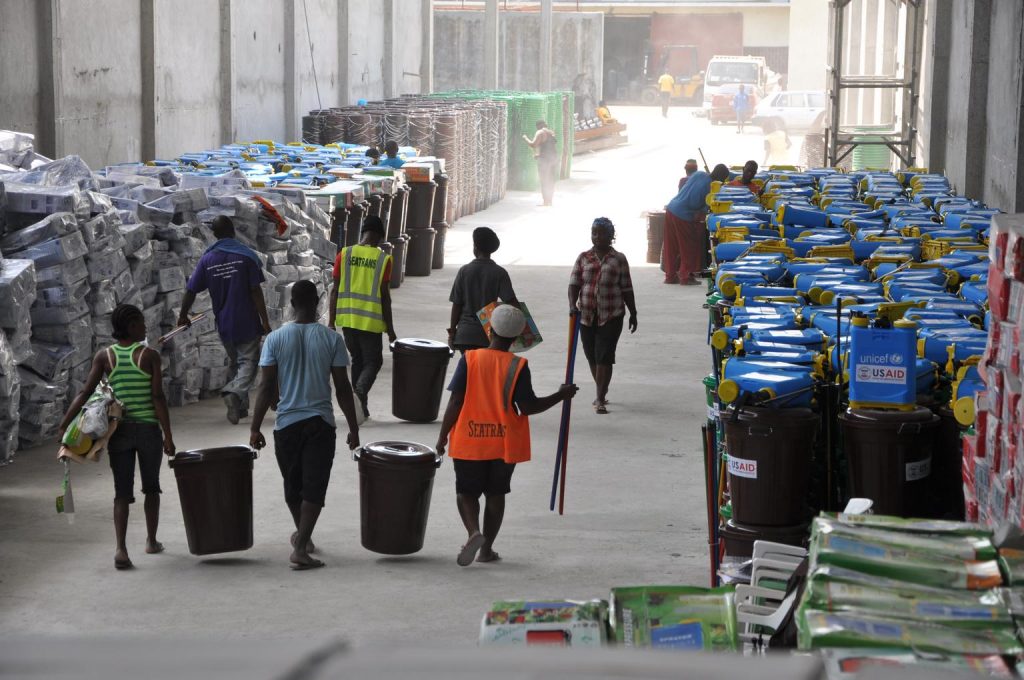Regional and global disease epidemics, which followed in the wake of the First World War, became the crucial tipping point in the balance between resistance and accommodation that had been established between the British colonial administration and newly colonized people of the Sierra Leone Protectorate. From 1915 to 1919, a smallpox epidemic and the global influenza epidemic overwhelmed the inhabitants of the northern region of Sierra Leone, severely disrupting the movement of people, agricultural production, and trade. In the wake of these epidemics and social disruptions, British colonial demands for revenue, labour, and food from Sierra Leoneans to support their European war effort became more onerous. By 1919, the surreptitious protests of the pre-war period had given way to open and violent confrontation, as anti-Syrian and rice riots swept through the urban areas of the protectorate and colony.
Resource
Epidemics and Resistance in Colonial Sierra Leone during the First World War

On 28 January, workers carry large buckets and other items that are part of school infection prevention and control (IPC) kits, in a warehouse in Monrovia, the capital. The logos of UNICEF and USAID (the United States Agency for International Development) which helped fund the kits are visible on some of the buckets and other items. The kits also contain buckets with faucets, rubber gloves and rubber boots, thermal guns, chlorine and chlorine sprayers, soap, brooms and other items for schools to implement the strict safety protocols that have been developed for the resumption of classes in the context of the Ebola outbreak. UNICEF has procured and is packaging and dispatching more than 7,000 IPC kits to over 4,000 schools in the country. Liberia, with Guinea and Sierra Leone, continues to experience widespread and intense EVD transmission.
In late January/early February 2015 in Liberia, as schools prepare to reopen, UNICEF and partners are helping reduce as much as possible the risk of Ebola virus disease (EVD) transmission. Support includes training teachers to implement safety measures, such as daily temperature screenings, and supplying thermometers and hand-washing kits for schools. Because of EVD, public schools in Guinea, Liberia and Sierra Leone remained closed after the JulyAugust break, depriving 5 million children of months of education. Amid continued school closures in Liberia and Sierra Leone, UNICEF is working with governments and communities to prepare for their eventual reopening. Schools are scheduled to reopen in Liberia on 16 February.
Related content
Case study
SSHAP learning note: Building a localised approach
This learning note shares insights, experiences and lessons from SSHAP's approach to the localisation of its operational responses in sub-Saharan Africa.
Central and East Africa Hub
West Africa Hub
SSHAP
2025
Evidence review
Rapid evidence synthesis: Mpox community protection
This note presents a rapid synthesis of evidence related to community protection in countries affected by the mpox clade 1b outbreak. Synthesising evidence related to community protection for mpox Medline, Africa Journals Online and Global Index Medicus were searched. IFRC,…
SSHAP
2025
Report
Meeting report: The impact of global aid funding cuts on people and programmes in South Sudan
Report of a roundtable with government actors, academics, development partners and journalists in South Sudan on the sweeping impacts on people and programmes of aid cuts and multiple, intersecting crises.
Central and East Africa Hub
SSHAP
2025
Briefing
Key considerations: Home-based care for mpox in Central and East Africa
This brief outlines key considerations on health system requirements for safe and inclusive home-based care for mpox.
Central and East Africa Hub
SSHAP
2025


